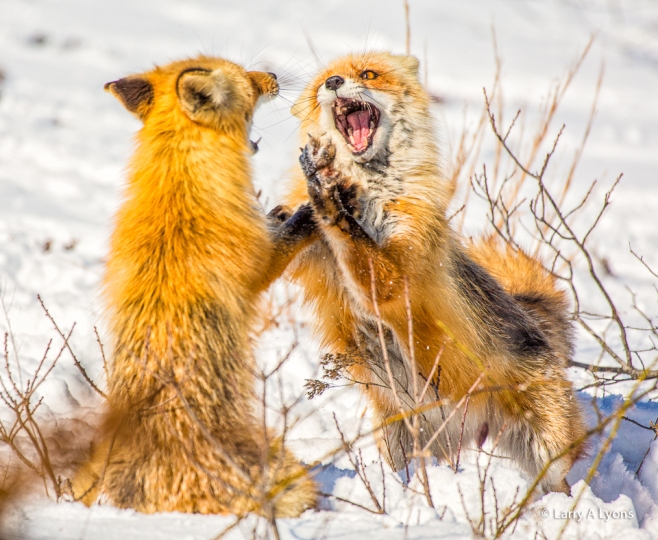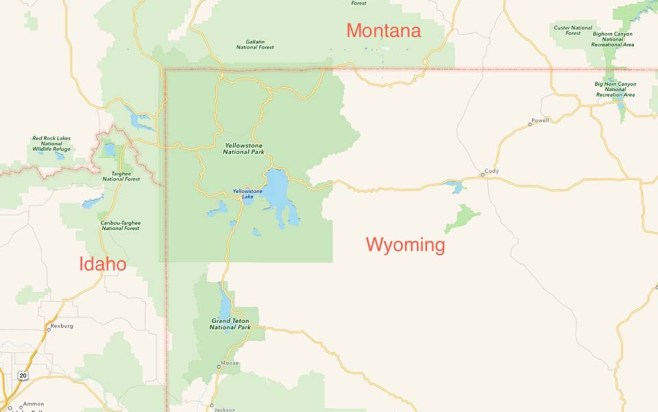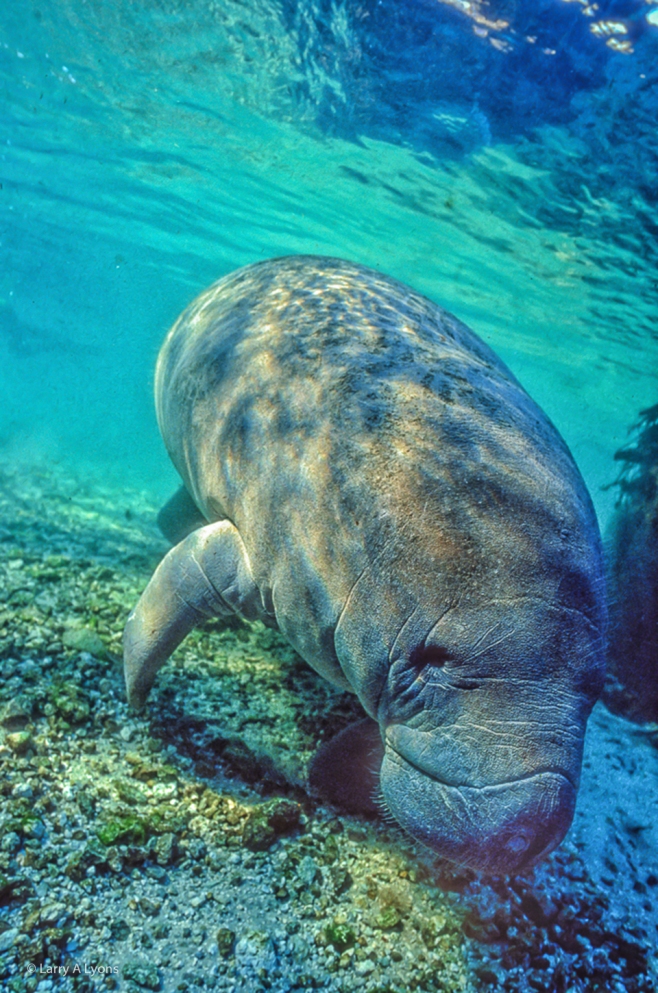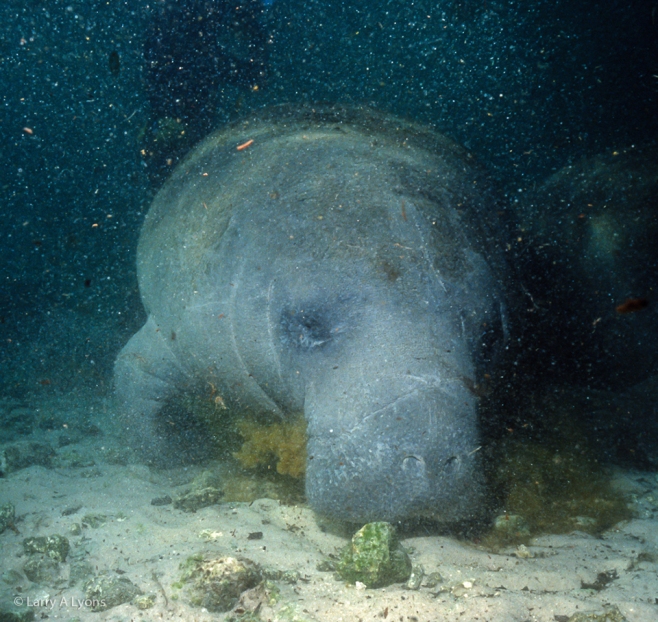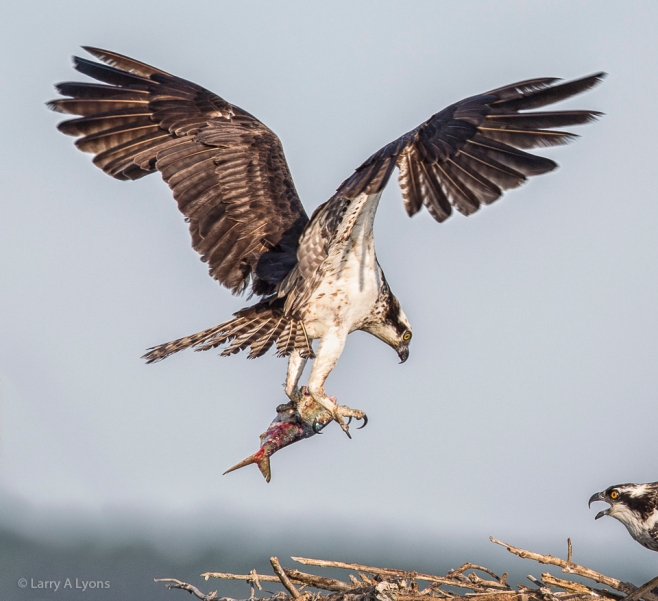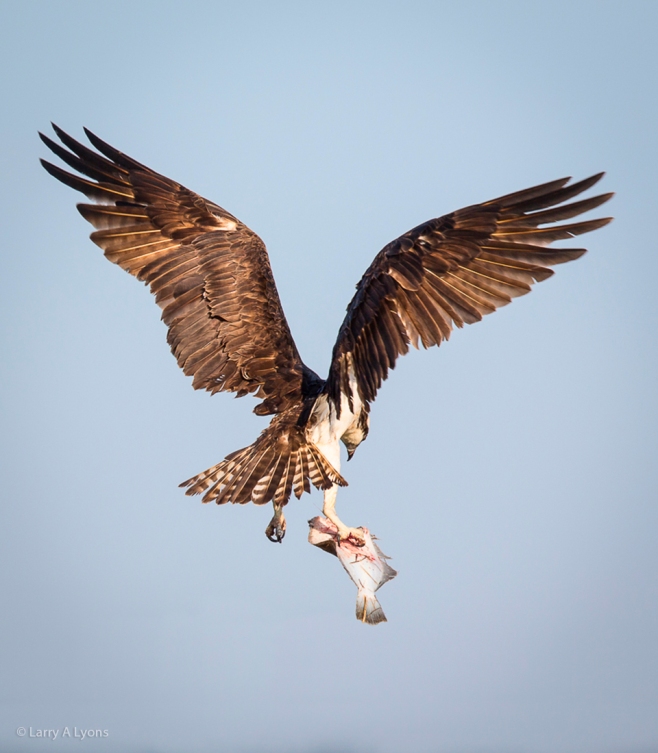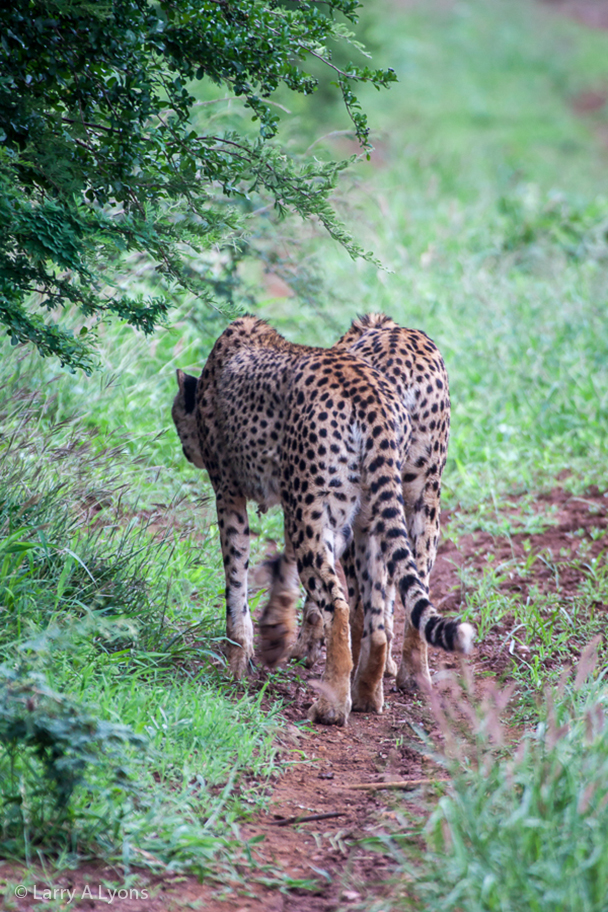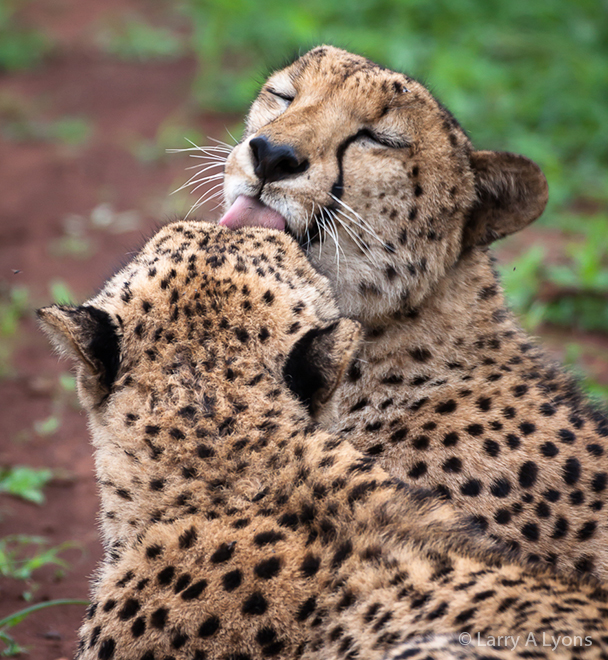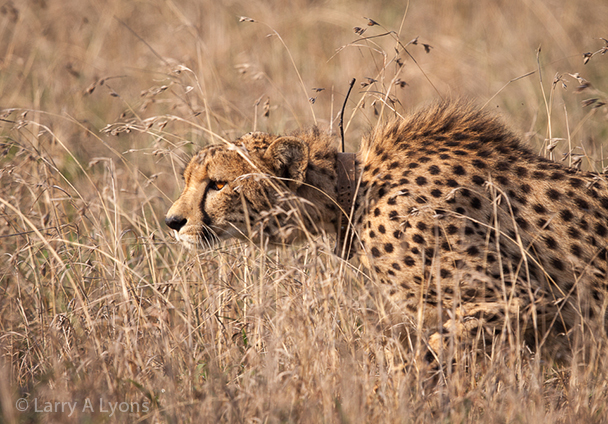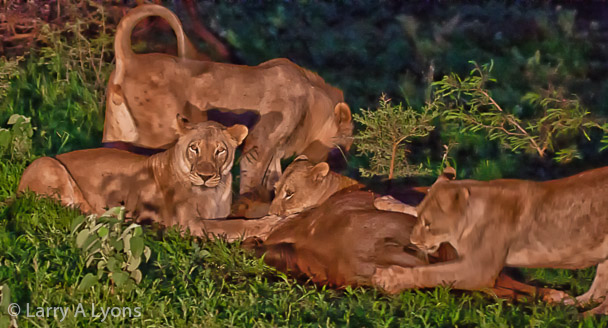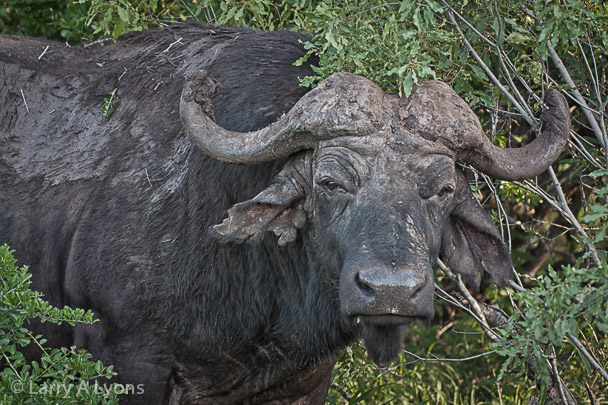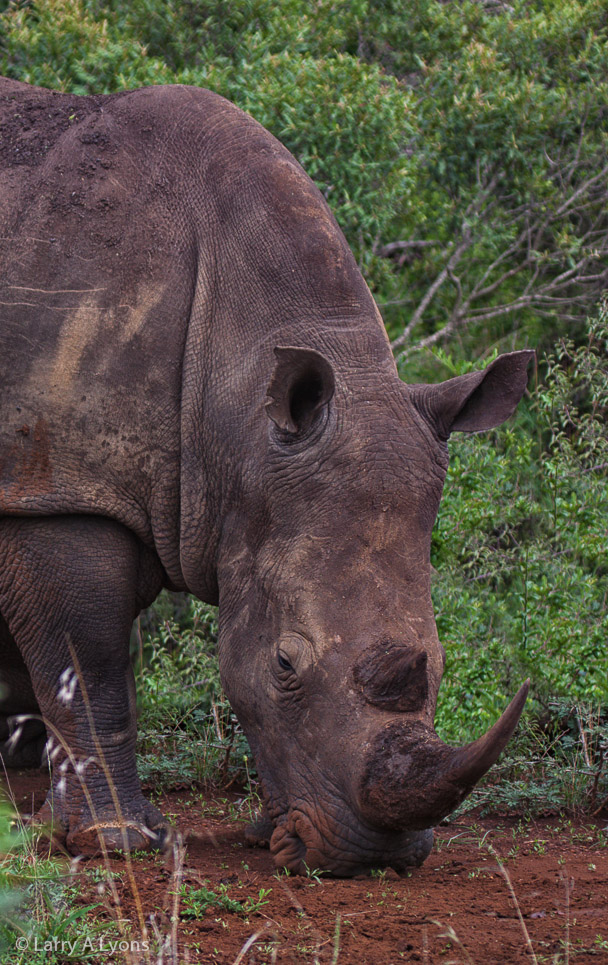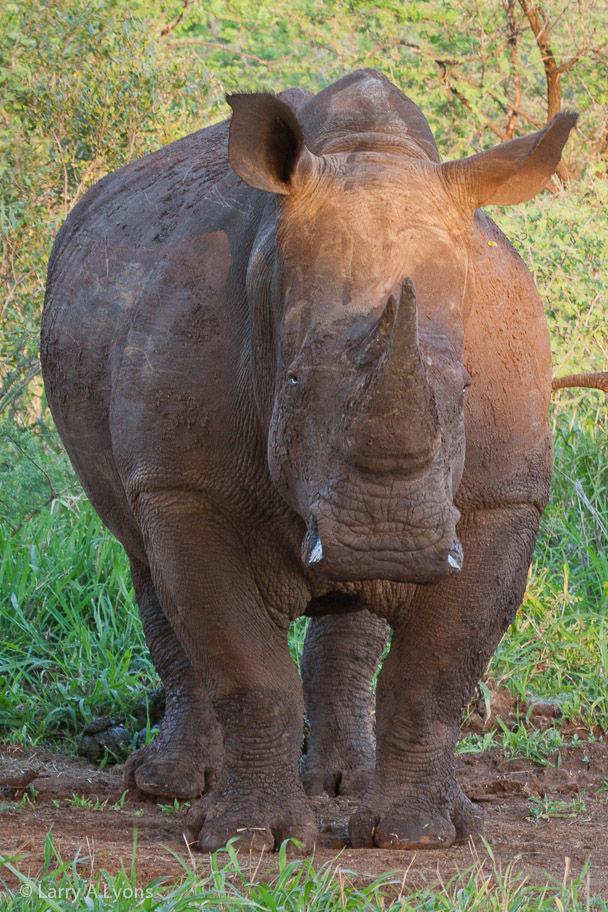Happy 100th Year Anniversary to the National Park Service responsible for managing and preserving the national parks, monuments and reservations of the United States. Yellowstone, being the first national park, was declared a national park in 1872. The U.S. army was originally responsible for managing and protecting the park until the formation of the National Park Service in 1916.

‘Yellowstone Bison’ © Larry A Lyons
Two previous posts described the landscape and the geological features of ‘Yellowstone National Park’ and ‘Grand Teton National Park’. Both of these national parks are a part of the ‘Greater Yellowstone Ecosystem’.
This post provides a “glimpse” into some of the more iconic wildlife species that inhabit this diverse ecosystem. The intent is not only to provide awareness on some of the behavior of these animals but also to further assess our understanding on the importance of maintaining and developing adequate buffer zones surrounding our national reserves. This is essential for sustaining wildlife populations within a healthy and natural ecosystem for future generations.

Geysers and Steam Vents Galore’ © Larry A Lyons
The core of the ‘Greater Yellowstone Ecosystem’ (GYE) is Yellowstone National Park. This ecosystem extends well beyond the boundaries of our first national park encompassing approximately 22.6 million acres. It includes the Grand Teton National Park, state parks, portions of five national forests, three wildlife refuges, Bureau of Land Management holdings, private lands, and tribal lands. It extends from the northwestern region of Wyoming into Montana and Idaho. Federal government agencies, state governments, tribal governments and private individuals are responsible for managing this ecosystem.
The GYE has been recognized as a model of an extremely important concept known as “Ecosystem Management”. Ecosystem management involves a complex and long-term process that serves to conserve the integrity of natural resources and wildlife populations. It encompasses some of the following objectives:
- Sustaining healthy wildlife populations from apex species (e.g., gray wolf, grizzly bear, cougars) to iconic and prey species (e.g., elk, bison, pronghorn, moose) to the hundreds of other animal and plant species that are an integral part of this ecosystem. It requires maintaining a delicate and complex balance between species and an understanding of the carrying capacity of this ecosystem for each wildlife population.
- Protecting public and private lands that will continue to require curtailing and controlling the expansion of human development.
- Learning to co-exist with wildlife.
- Continue to secure crucial habitat that will provide an appropriate buffer zone for the sustainability of this ecosystem for future generations.
- Protecting and restoring vital rivers, lakes and streams. Healthy aquatic systems are not only essential for maintaining the health of the GYE, but the headwaters for three critical river systems – the Missouri, the Columbia, and the Colorado – begin in this ecosystem.
- Protecting endangered or threatened species.
- Requiring and utilizing scientific knowledge to process management decisions and objectives.

‘Oxbow Bend’ © Larry A Lyons
The collaborations of people, institutions and organizations are absolutely critical in managing and achieving all of these goals. Park rangers are the core wearing many different hats including protecting the reserves, insuring that people maintain a safe distance from the wildlife, rescuing wildlife, and being a great resource of information for the public.
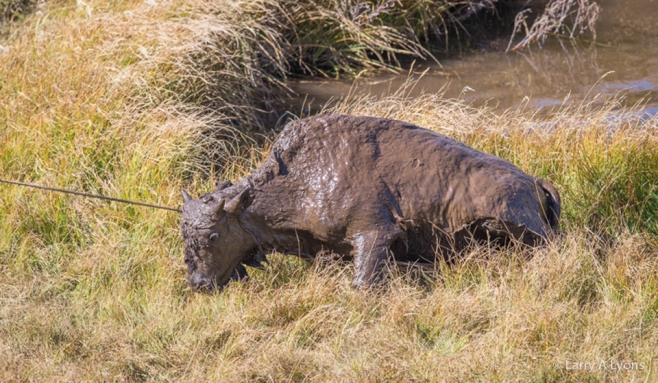
‘Bison Calf Rescue’ © Larry A Lyons
In addition, there are several ‘key’ non-profit and grassroots organizations – including, ‘The Greater Yellowstone Commission’, and ‘Defenders of Wildlife’ – that have been instrumental in defending and advocating the importance of this ecosystem. Indeed, the complexity and patience of addressing all of the diverse human interests and priorities is as challenging as developing, managing and administering an expansive and vital ecosystem.

‘Grand Canyon of Yellowstone’ © Larry A Lyons
_____________________________
The ‘Greater Yellowstone Ecosystem’ is home to over 50 species of mammals and 300 species of birds. All images herein were captured within Yellowstone and Grand Teton National Parks. Let’s start with the ‘Majestic Elk’ and begin to get a perspective of the importance of ecosystem management.

‘Majestic Elk’ © Larry A Lyons
Elk have been living in Yellowstone for more than 1,000 years and at one time they ranged across most of North America. Today they live mostly in western North America, particularly in mountainous landscapes such as, Yellowstone and the National Elk Refuge located in Jackson Hole Valley within the Grand Teton National Park.
There are between 30,000 to 40,000 elk within several different herds living and migrating within the GYE. They tend to migrate as large herds into areas of higher altitude in the spring once the snow has receded and then return to lower altitudes or valleys in the fall before the harsh winter commences. These migrations are necessary to move into areas where forage is more accessible. Elk forage on native grasses, tree bark, flowering plants, and tree sprouts, particularly aspen and willow sprouts.
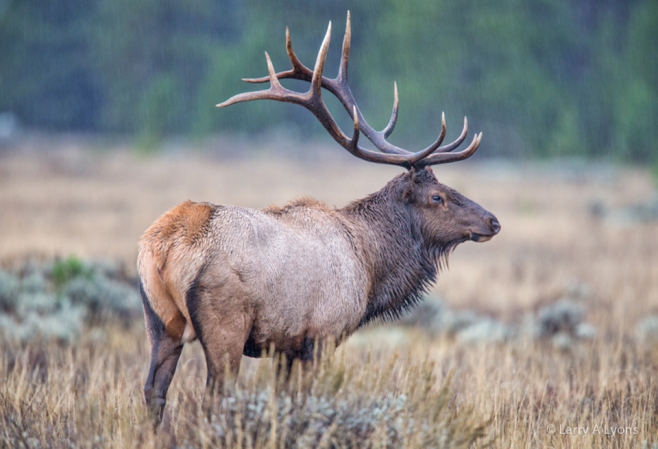
‘Stands Nine Feet Tall’ © Larry A Lyons
A decline of elks for some of the herds has been recorded. This decline is being attributed to a number of factors including the predation by the re-introduced gray wolf, predation by a greater bear population, food quality, climate, harvesting by hunters, and drought related impacts on pregnancy and survival. Hence, scientific investigations become necessary to understand not only the carrying capacity (i.e., the proper balance of food sources and habitat for sustaining a population) within the GYE, but also to understand the complex interactions that affect a wildlife population.

‘Elk Bedding Down’ © Larry A Lyons
The antlers of a bull elk can reach four feet above its head so that the animal towers nine feet tall. Bull Elks retain their antlers through the winter, but the antlers are shed in the spring. They begin to grow new antlers soon after in preparation for the late summer breeding season.
Elks have a defined rump area with a short tail. Bull elks will dig holes in the ground where they will urinate and roll their body. A male elk’s urethra points upward so that urine is sprayed at right angle to the penis. The urine soaks into their hair giving them a distinct smell to attract cows.

‘Elk Perfume’ © Larry A Lyons
Bull elks have a very distinctive and loud screaming sound known as ‘bugling’ that can be heard for miles. It is an iconic sound to be heard for miles away in the fall. Females are attracted to the males that bugle more often and have the loudest sound.

‘Elk Bulging’ © Larry A Lyons
During the mating season, mature bulls compete for the attentions of the cow elk. A bull elk will defend his harem of 20 cows or more from competing bulls and predators.

‘An Elk Harem’ © Larry A Lyons
Cow elks do not have antlers and are 60% smaller than mature bull elks. They do grow in a thick coat of hair in the fall for insulation during the severe winters.

‘Female Elk and Calf’ © Larry A Lyons
Gray wolves, bears and cougars, and coyote packs are considered the primary predators of elk. Here a large grizzly bear was seen feeding on an elk.

‘Grizzly Bear Feeding On An Elk’ © Larry A Lyons
_______________________________
This photographer did not get the opportunity to capture any gray wolf images during this particular expedition, but the story of the re-introduction of the gray wolf provides a miraculous example of reviving not only an endangered species, but also resulted in immensely improving the overall health of the entire ecosystem.
There were no gray wolves in Yellowstone in 1994. Wolves were reintroduced back into the greater Yellowstone area in 1995 and 1996. There are now over 500 descendants living in this ecosystem. The return of the wolf population within the GYE has resulted in restoring the habitats that have been seriously declining. This decline was primarily attributed to the elk becoming overly populated since wolves, being their primary predator, were not present. The overpopulation of elk caused the decline of habitats by the overgrazing of woody tree stands of aspens, cottonwoods and willows. However, once the wolves were restored back into the GYE, the elk numbers began to decline and the tree stands began to recover. This further resulted in a number of other benefits including an increase in beaver populations that resulted due to the increased presence of willow trees that are needed for beavers to survive. Beaver dams contribute an important component to this ecosystem. The dams not only reduce erosion along river banks, but also create ponds and marsh habitats for moose, otters, mink, wading birds, and a diversity of aquatic organisms.

‘Beaver Dam on Snake River’ © Larry A Lyons
______________________________
Coyotes have become quite adaptable in all sorts of habitats and landscapes and are spread throughout North America.

‘Coyote’ © Larry A Lyons
The coyotes residing within GYE tend to be amongst the largest coyotes within the United States ranging is size from 30 to 40 pounds (13 to 18 kg).

‘Prowling Coyotes’ © Larry A Lyons
Coyotes have a keen sense of smell and eyesight. They can run up to 40 miles (64 km.) per hour. They will hunt rabbits, rodents, fish, frogs, and even deer. Coyote packs will even prey on elk calves or weakened adults. They also will feed on insects, snakes, fruit and carrion. They will form packs, particularly in the fall and winter, for more effective hunting. Wolves and cougars are coyotes’ main predators.
The coyote population within the GYE has decreased since the re-introduction of the gray wolf, which is primarily attributed to competing for habitat and prey and also being preyed upon by wolves. However, the suppression of coyotes has resulted in an increase of their prey including rabbits, mice, and young deer. This increase of coyote prey has resulted in improving red fox populations. Indeed, an ecosystem with a healthy food web is bloody, complex, and natural.

‘Stalking For Prey’ © Larry A Lyons
___________________________
Moose are well suited for the Yellowstone ecosystem. Moose’s long legs allow them to adapt to the deep snow conditions in the winter and allows them to wade into aquatic environments to browse on aquatic plants (i.e., water lilies, duckweed) but their primary food source are the leaves and twigs of the willow trees.

‘Bullwinkle’s Lady’ © Larry A Lyons
However, moose populations have been seriously declining since the 1990’s. Climate changes and heat stress caused by global warming, poaching, reintroduction of wolves, and parasitic diseases are factors that may be attributing to their decline.
Moose are solitary animals that do not form herds. This female moose (cow) has been growing in a thick layer of fur in preparation for the upcoming and harsh winters in the GYE. Their mating season is in the autumn and the cow can be heard grunting in search of a mate. Cows are pregnant through the winter with a gestation period of about 8 months.

‘Female Moose’ © Larry A Lyons
________________________
Mule deer are indigenous to western North America deriving their name from their large mule-like ears. The buck sheds its antlers in the spring and then begins to grow new antlers in preparing for the fall mating season. The antlers fork as they grow. The primary predators of the mule deer, besides humans, are the gray wolves, coyotes and cougars.

‘Mule Deer’ © Larry A Lyons
___________________________
Pronghorns are found in the western United States with the highest number of pronghorns can be found in Wyoming within the Yellowstone ecosystem. Pronghorns are herbivores consuming grasses, flowering plants and sagebrush. They like open plains, fields, grasslands, deserts and basins. Their eyes are quite remarkable in that they can pick up movement three miles away allowing them to spot predators (coyotes and wolves) at some distance.

‘Pronghorn Overlook’ © Larry A Lyons
Both males and females have horns referred to as pronghorns. The female has a pair of short horns on the top of the head, while the horns of the male are 10 to 12 inches (25 to 30 cm) long. The male horns have unique characteristics with the horns pointing backwards along with a short prong extending in the front of the horn.

‘Male and Female Pronghorns’ © Larry A Lyons
Pronghorns breed in late summer or fall. A male pronghorn will establish a breeding territory with a group of females and will breed with multiple females. The male keeps a constant vigilance over his harem and is quite aggressive about protecting the harem. If a female wonders off, the male quickly corrals the female back. Vocalization and body language of the male dictates a strict social structure.
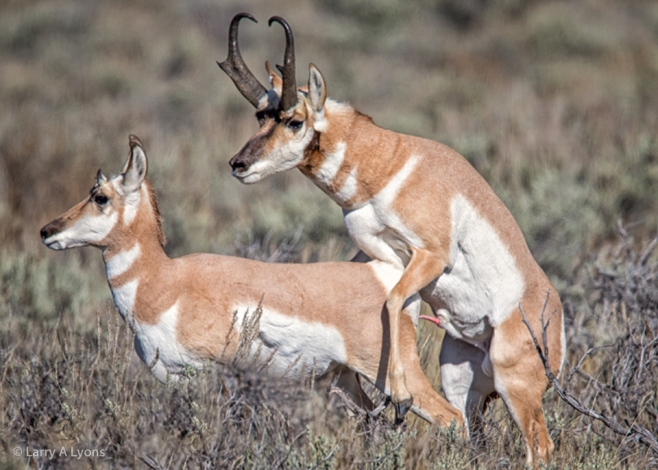
‘Pronghorns Mating’ © Larry A Lyons
After mating, the females will be pregnant throughout the winter and will give birth in the spring.

‘Pronghorn Harem’ © Larry A Lyons
Pronghorn antelope is considered the fastest land animal in North America with speeds up to 60 miles/hour (96 km/hr). Pronghorns will migrate long distances (150 to 200 miles one way) between summer and winter feeding grounds. Their migration is a perilous journey being threatened by vehicles, impassable fences and development. The creation of wildlife corridors that can reduce the conflict between animals and people is an ongoing challenge and objective of the National Wildlife Federation and other affiliates.

‘Pronghorn Vocalizing’ © Larry A Lyons
_____________________________
An important lesson was learned in regards to managing bear populations in Yellowstone over the past several decades. Prior to 1969 bears were attracted to developed areas of Yellowstone National Park by the availability of human foods either as handouts or garbage. The bears essentially relied on these human food sources instead of foraging naturally. Then in 1970 an intensive bear management program was activated that included strict regulations prohibiting the feeding of bears. The intent was to restore the bears back to foraging naturally. However, it took awhile for the bears to learn to hunt and forage for themselves. In the interim the bears became more aggressive particularly in camps. Evidently, it seems that this necessitated in euthanizing over 100 bears that almost created near extinction of the grizzly bear population. In 1975 it was listed as a threatened species. In 2007 the grizzly bear was removed from the endangered species list. The grizzly bear population within the GYE is estimated being between 300 to 600 bears.

‘Grizzly Bear’ © Larry A Lyons
Grizzly bears are omnivores having a very diversified diet of plants and animals. They will prey on large mammals including elk, moose, mule deer, and bison. They will feed on trout and a variety of small mammals. They also will consume berries, insects, tubers and grubs (insect larvae). Bears need to build-up their reserves in preparation for their winter hibernation. Here this mother and cub were foraging for grubs in a ravine.

‘Learning The Ropes’ © Larry A Lyons
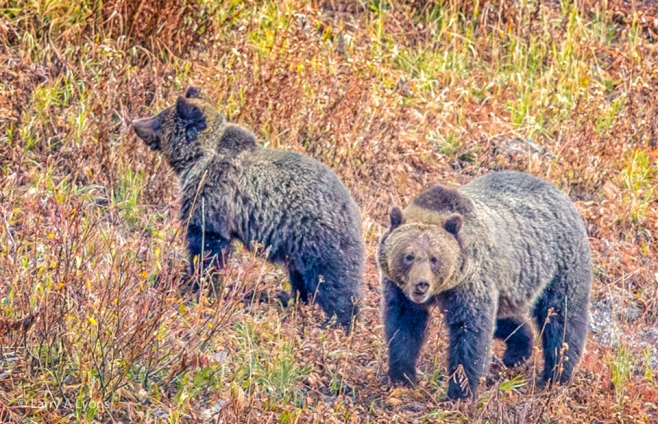
‘Mother and Cub’ © Larry A Lyons
The hump on their shoulders is a distinctive characteristic identifying a grizzly bear. Mother bears rear their cubs for two to three years. Female bears will try to avoid male bears since they can be a danger to the cubs. This mother with its cub was just checking that the photographers and onlookers at the top of the ravine had no intentions of moving closer.

Mother and Cub Grizzlies’ © Larry A Lyons
_______________________________
Nearly 300 species of birds have been sighted within Yellowstone Park, of which 150 species nest in the park. Some of the resident populations of birds in Yellowstone include trumpeter swans, common loons, American white pelicans, sandhill cranes and bald eagles.

‘Bald Eagle Close-up’ © Larry A Lyons
Bald eagles can often be seen perched along riverbanks waiting to prey on fish. Their wingspan can reach up to 7 feet (2 meters). In 1995 the U.S. Fish and Wildlife Service downlisted the bald eagle from an endangered species to threatened for the GYE.

‘Pursing A Trout Dinner’ © Larry A Lyons
_____________________________
Somewhere between 30 and 60 million bison roamed North America around 1850. Then they were slaughtered almost to extinction. The quest to settle the American West caused this massive slaughter of the bison. It evolved from the commercial hunting and slaughter of the bison for their hides, from the development of railroads heading west, from settlers wanting to transform the Great Plains used by the bison for farming and ranching, and from the settlement of U.S. Army forts. All of this resulted in restricting the Native American Tribes of the Great Plains whose livelihood was dependent on moving with the migratory herds of bison.
By 1883 nearly all of the bison were gone. Only a few dozen plains bison survived and were provided refuge in the 1870’s upon the formation of Yellowstone National Park. However, poaching of the bison persisted. It was the Lacey Act of 1894 that allowed stronger punishment for poachers. No more than 25 bison remained in 1902. Today’s Yellowstone bison are the descendants of those 25 ‘wild’ bison.

‘Bison Roaming Free’ © Larry A Lyons
Today most bison are managed as domestic livestock. It is primarily the Yellowstone and the Jackson Hole bison herds that have retained their ‘wild’ status. A ‘wild’ bison population is one that roams freely within a defined conservation area, where the loss of existing genetic variation is mitigated with sufficient animals, and is subject to forces of natural selection (e.g., predation, harsh environmental conditions, mating, searching for food).

‘Bull Bison’ © Larry A Lyons
Unfortunately, the ecosystem management efforts for these remaining ‘wild’ bison populations have been inadequate in a manner that will provide long-term sustainability. The two Yellowstone bison herds in Yellowstone National Park and the Jackson Hole herd in the Grand Teton National Park are not only restricted to staying within the boundaries of these two national parks but are also severely restricted in the total numbers allowed to roam freely in these parks. The two sub-herds in Yellowstone are being maintained at 3,000 individuals and the Teton herd is maintained at 600 individuals.
There has been a severe lack of tolerance for wild bison to roam outside of the parks within the GYE primarily because of the potential concern of spreading the bovine brucellosis disease. This disease is a spillover disease from cattle to elk and bison and now spills back from elk to cattle. It is the rigorous management actions of keeping cattle and bison spatially and temporally separated that have eliminated the transmission of the disease from bison to cattle. It is this realization that reasonable management practices can effectively control the potential spread of brucellosis between cattle and bison that is beginning to allow a greater tolerance for Yellowstone wild bison to roam beyond the park.
After years of campaigning by many people and organizations to allow wild bison to expand within the GYE, the impasse has been lifted to the extend that will allow Yellowstone’s wild bison to roam in some 400 square miles outside the park. This area establishes year- round bison habitat as well as tolerance areas north and west of Yellowstone National Park into the state of Montana.. It is considered a major first step that should curtail the hazing and killing of bison around Yellowstone. It is a huge win for wild bison.

‘Mother and Calf Bison’ © Larry A Lyons
Bison are nomadic grazers that roam grassy plateaus in the summer but in the winter finding suitable areas to graze particularly during extended periods of deep snow conditions is challenging particularly if their area to roam is restricted. When grazing in the winter, they swing their large heads from side to side to clear the snow to feed on the grass.

‘Bison Grazing’ © Larry A Lyons
Bison are massive animals. The bull (male) bison stands 6 feet (2 m) tall and weighs up to 2,000 pounds (900 kg) while and the cow (female) bison weighs about 1,000 pounds (500 kg). Both the bull and cow have horns curved upward that are retained for their life span. Young bison entering their first winter have a high risk of dying. About 20 to 40 of every 100 first-year calves may die from accidents, winter exposure or predation.
In spite of their size bison are very agile. They can run 35 miles per hour (55 km/ hr) and can jump over objects 6 feet (1.8 meters) tall. You must not approach them too closely. As the Greater Yellowstone Coalition has stated about bison, ‘They’re wildlife and they deserve to be treated as wildlife”.
_____________________________
The Greater Yellowstone Ecosystem (GYE) has the largest concentration of wildlife within the continental United States. The abundance and the distribution of these wildlife species depend on their interactions with each other and on the quality and extent of their habitat. The development of reasonable buffer zones is absolutely essential to conserve the integrity of our natural resources and wildlife populations.
The re-introduction of the gray wolf, the return of the grizzly bear from near extinction, the proper control and sustainability of elk populations, the establishment of wildlife corridors to allow the migration of the pronghorns, the continued effort to provide adequate habitat for the ‘wild’ bison populations to prosper are a testament to the resiliency of nature if we apply sensible ecosystem management practices. It is bringing ‘wild’ back into the ‘wilderness’.
Scientific investigations and monitoring needs to be continually funded to understand and assess the carrying capacities and health of the wildlife populations within the GYE. These studies are also necessary to understand how climate change is and will be affecting the GYE. We must continue to learn to co-exist with wildlife. We must never forget that we are the custodians of the natural world.
______________________________
Resources:
Buffalo Field Campaign (http://www.buffalofieldcampaign.org)
Defenders of Wildlife (http://www.defenders.org)
Greater Yellowstone Coalition (http://greateryellowstone.org/)
National Wildlife Federation (http://www.nwf.org/wildlife/wildlife-library/mammals/pronghorn.aspx)
National Park Service (https://www.nps.gov/yell/planyourvisit/basicinfo.htm)
Yellowstone, National Geographic Magazine, May 2016
Yellowstone Science (https://www.nps.gov/yell/learn/yellowstone-science.htm)
Yellowstone Bison: Conserving an American Icon in Modern Society, Edited by P.J. White, R.L. White, D.E. Hallac, Yellowstone Association and Yellowstone National Park, 2015.




















































